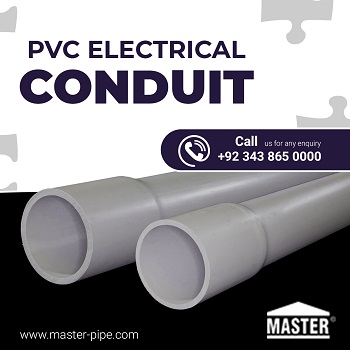PVC pipe that has been subjected to ultraviolet light for long periods of time loses any strength but not enough to cause a significant decrease in the capacity of the tube to withstand water pressure. Ultraviolet rays often cause changes in color to the outside of the tubing. You will avoid the problem by coating with an ultraviolet-resistant paint some PVC pipes in your house that are specifically exposed to the sun.
PVC electrical conduit exposure to the UV component of sunlight results in PVC molecules being permanently converted into a complex structure typified by polyene formations in the first.001 “to.002” of the exposed surface. The effect is a discolouration, also referred to as “Sun discolouration,” “UV oxidation,” or just “sunburn.” The pipe’s coating can shift first by losing shine, leading to chalking and discoloration. (Typically, discoloration will advance yellow to brown to black) UV discoloration will not arise when PVC is not exposed to sunlight, and will stop until exposure terminates.
The cycle of discoloration depends on time, and can be slowed down with the introduction of UV absorbers in the PVC electrical conduit mix.
The degree to which sunlight influences impact intensity depends on a number of factors, including: exposure time, climatic conditions, pipe width, pipe wall thickness and form of PVC compound used. It is difficult to predict how long it will take before the results of exposure to sunlight are apparent owing to the combination of the variables. In fact, smaller-diameter and thinner-wall pipes will have more benefit from exposure to sunlight than bigger, thicker-walled pipes.
For permanent structures of plastic pipe Karachi above ground, it is advised to shield the pipe from exposure to sunlight. This can be achieved by covering the tubing or, more generally, coating it with an opaque content. When painting the tubing, it is advised to use a water-based paint designed for exterior use. Oil or solvent-based paints may cause damage to the pipe and/or fail to stick well. White or light-colored paints are best suited to minimize heat build-up.
Indoor or under-cover storage may provide this. If the commodity is to be processed outside, it should prevent heat trapping. Any plastic wrap used to secure the shipment during transit should be removed before placement of the product in storage outside. Never store pipe or fittings next to buildings that have direct exposure to sunlight, particularly in summer months. Do not store heat-generating equipment near the pipe or fittings.
Due to excessive heat build-up, the pipe or fittings can deform. Pipe or fittings can be partially concealed with a suitable material such as a white tarp or burlap. Black plastic should never be used because of its characteristics which generate heat.
